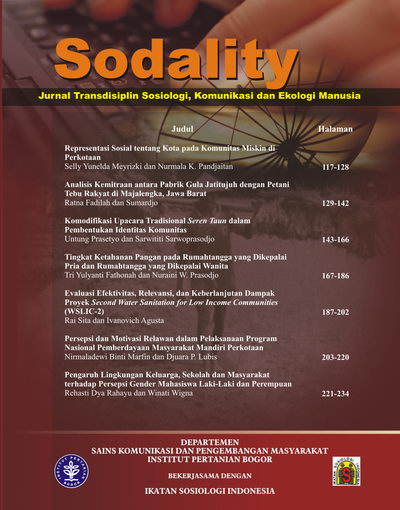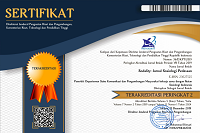Social Representation of City in Rural Poor Communities
Abstract
Indonesia is a developing country which has focused on development. The development and acceleration of economic growth that occurred in Indonesia has not been evenly distributed in every province. This gives rise to a phenomenon of population movement (migration) occurring in rural communities who migrate to urban areas which eventually give rise to a phenomenon of urban poverty. The purpose of this study was to identify the characteristics of poor communities urban areas and to identify social representations about the city in poor communities in urban areas. The characteristics of poor communities are generally aged between under 25 to more than 54 years old, the majority of respondents are women, and generally work in the informal sector. The level of education of respondents are elementary school level (SD) or equivalent to high school level (high school) or equivalent. The income that can be obtained by poor communities were Rp. 100.000.00 up to Rp.1.500.000.00 per month. Overall poor communities did rural-urban migration between 1970 until 2010. The reason was to find a job, looking for experience, come to join her parents and husband, and generally they spent a time in a location was between 1 to 30 years. The frequency of returning home is zero to more than 4 times in the past year. Most of them do not choose the location as the first residence in the city. There are 4 kinds of type of social representations about the city and the poor. The dominant type of social representations about city is type a place to earn money. Beside that, the dominant type of social representations about the poor is underprivileged person.
Published
2011-08-16
How to Cite
Yunelda MeyrizkiS., & K. PandjaitanN. (2011). Social Representation of City in Rural Poor Communities. Sodality: Jurnal Sosiologi Pedesaan, 5(2). https://doi.org/10.22500/sodality.v5i2.5825
Issue
Section
Articles
Authors who publish with this journal agree to the following terms:
- Authors retain copyright and grant the journal right of first publication with the work simultaneously licensed under a

This work is licensed under a Creative Commons Attribution 4.0 International License. that allows others to share the work with an acknowledgement of the work's authorship and initial publication in this journal. - Authors are able to enter into separate, additional contractual arrangements for the non-exclusive distribution of the journal's published version of the work (e.g., post it to an institutional repository or publish it in a book), with an acknowledgement of its initial publication in this journal.
- Authors are permitted and encouraged to post their work online (e.g., in institutional repositories or on their website) prior to and during the submission process, as it can lead to productive exchanges, as well as earlier and greater citation of published work (See The Effect of Open Access).





.png)










